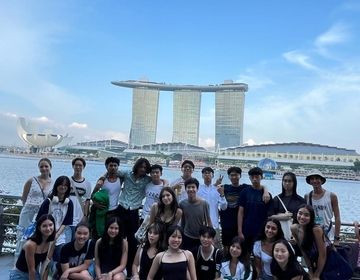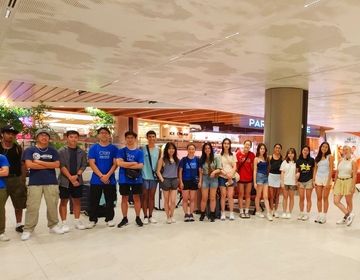Sustainability in Singapore
As a densely populated island city state that is only 719 km² (278 mi²) (smaller than the size of New York City), Singapore must be conscious of their land and environment. This need for thought and planning is especially true as climate change and rising sea levels threaten the livability of the low-lying country (there is an average elevation of only 15 m above sea level). This week students learned more about the purposeful efforts of Singapore to build a sustainable city through a visit to the Marina Barrage, the Gardens by the Bay, and Edible Garden City.
Marina Barrage is the largest of Singapore’s 15 freshwater reservoirs and serves as a source of water supply, flood control, and a venue for recreational activities. With a limited amount of freshwater, reservoirs such as this one decrease Singapore’s dependability on other countries. These reservoirs are a part of a much larger vision towards sustainability that began under Lee Kuan Yew (the first Prime Minister of Singapore). Other parts of the plan include reducing waste, increasing recycling, and adding more trees and plants throughout the city.
The incorporation of nature throughout the city is apparent not only throughout the streets and architecture design of buildings, but through the efforts of Gardens by the Bay. The Gardens encourage the development of natural ecosystems through their lakes and vegetation, inspire individuals and businesses to increase horticulture, and be a model for sustainable development and conservation.
Taking education and sustainability one step further, the Edible Garden City is an urban farming enterprise that is continually promoting sustainable practices within Singapore. On their visit, students learned about the foods and vegetation grown here in Singapore, as well as the history of agriculture within the country. Beyond growing and selling microgreens, Edible Garden City promotes learning and gardening within homes through providing workshops and grow kits.
Students learned plenty about sustainability throughout this trip, especially as it varies from sustainability in the United States.
Related Posts
Weekend in Malacca, Malaysia
As we made our way to the last weekend in Singapore, with the students working hard on their entrepreneurship ideas, we went on our planned trip to the city of... keep reading

First Weekend Highlights!
As we make our way to the half way point of this three-week program, the students are hard at work on their business proposal. They have had lessons on entrepreneurship... keep reading

Discovering Singapore: Our First Two Days with CIEE
Greetings from Singapore! Our journey with the CIEE High School Study Abroad Program in Global Entrepreneurship has just begun, and what an incredible start it has been. We landed in... keep reading